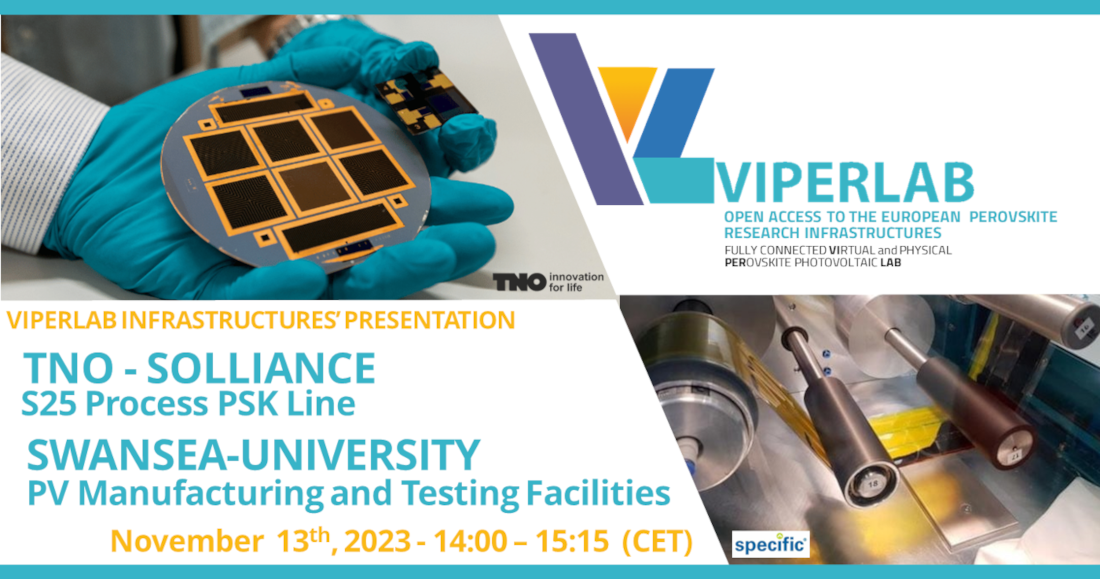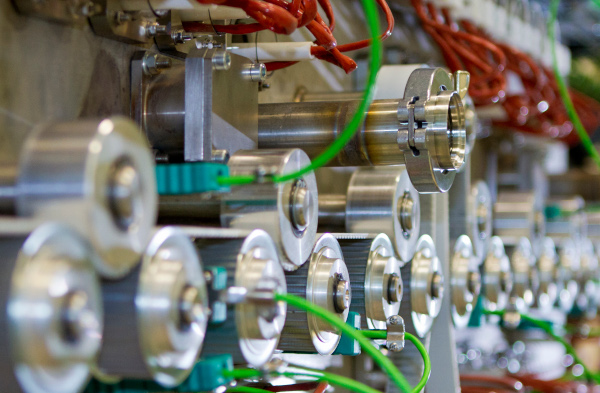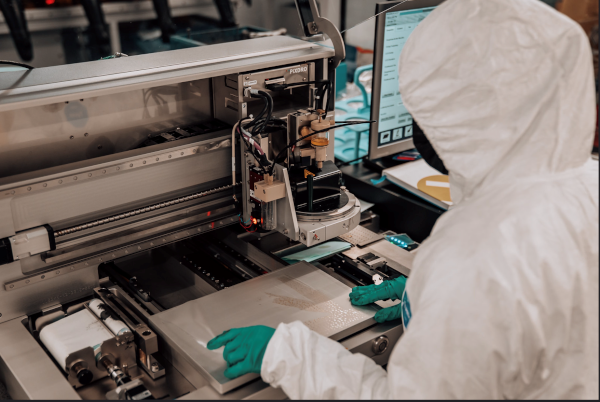TNO-Solliance & Swansea Uni Manufacturing and testing facilities


To participate click the button at the bottom of this page
Perovskite SJ and Pero/Si Tandem technologies are attracting significant attention from both the scientific and industrial communities thanks to the rapid increases of the conversion efficiency, Several efforts are put on the ground to chracterize the technological bottlenecks, overcome them and to push the technology toward the commercial world through the photovoltaic module upscale. This imposes a pre-industrial phase, where different equipment from coating systems such as blade coating, slot-die R2R coating and spray coating to printing pathways i.e screen, inkjet, and gravure printing besides vacuum deposition and laser patterning methods are currently used to support the potential of PSCs to move to their industrialization.
On November 13, 2023 14:00-15:15 (CET) VIPERLAB presents two very relevant research infrastructures offering state-of-the-art equipment for the fabrication, characterization, encapsulation, upscaling and testing of solar cells ad PV Module based on Perovskite SJ solar cells and Pero/Si Tandem
TNO-Solliance - S25 Process PSK Line
|
Photo: TNO-Solliance - S25 Process PSK Line @TNO |
The TNO-Solliance - S25 Process PSK Line , is an advanced infrastructure that offers great opportunites:
New material can be tested with scalable process on cell and module level and the loss of upscaling can be analysed as the area of device increases by about 4 orders magnitude; from the size of typical lab cells (in the order of square millimetres) to 6-inch modules. The infrastructure can also be utilized to manufacture a set of nearly identical perovskite modules to support other research purposes, e.g. outdoor testing, demonstrators, prototypes, tandem devices, etc. In addition, next to rigid substrates, the line can also handle flexible substrates and can thus be utilized to process flexible perovskite modules, and there is know-how for making perovskite cells directly on silicon wafers and devices with extremely high near-infrared transparency. This enables the manufacturing of two terminal and four terminal devices. |
SU - PV Manufacturing and Testing facilities
|
Swansea University - PV manufacturing and Testing Facilities infrastructure offers state-of-the-art fabrication and characterisation equipment for the printing and testing of solar cells devices with focused on solution processed OPV and perovskites devices. The cleanroom is a humidity and atmospheric controlled environment facility which contains an area a class 1000, and a class 10,000 area. The cleanroom facilities houses all the equipment required for making devices solar cells: 3 Gloveboxes , top-bench coater (i.e. Slot-die coater), screen printers, slot-die R2R coater, NIR drying ovens, and other basic solar cell building infrastructure (spin-coater, hotplates, etc…). In addition, it has a suite of state-of-the-art device and material characterisation equipment includes FEGSEM, XPS, XRD, FTIR, Raman, SKP-AFM, UV-Vis and Emission Spectroscopy, Phosphorescence Spectroscopy, Fluorescence Microscopy, ns-transient absorption spectroscopy (TAS) and TRPL. Materials can be tested using independent or hyphenated thermal analysis STA-FTIR-GCMS) as well as their Nano mechanical behaviour through tribo-indentation.
|
Photo: ink-jet processing ©Swansea University |
Informations
|
|
Videos/slides are now available. Click on the links below in the agenda |
Contacts to get more information about this event:
| Contacts: to get more information about this event | |||
| |
Dr. Natalia Maticiuc | HZB | |
| |
Dr. Francesco Roca | ENEA | |
| For any technical need | |||
| |
Viperlab C&D Team | ||
Agenda
| Time | Title | Speakers |
|---|---|---|
| 14:00 - 14:10 | Introduction |

Natalia MATICIUC
Technical Manager - WP11 Leader
|
| 14:10 - 14:30 | TNO-Solliance - S25 Process PSK Line |

Valerio ZARDETTO
S2S Process PSK LINE
|
| 14:30 - 14:50 | Swansea University - PV Manufacturing and Testing facilities |

David BEYNON

Rahul PATIDAR
|
| 14:50 - 15:10 | Questions & Answers | |








